The history of the blood countess Erzsébeth (Elizabeth) Báthory
Bats flutter off by the black-blue night sky. Crucifixes hang on dim lit up houses. Also by the tiny windows of the village pub "U Cachtice Panej" still light shines. Old men squat in wood banks, drink Slivovic, chat much and gesticulate violently. From their wrinkly faces glassy eyes pour. When the traveller lets the creaky door fall in the lock, the word thunderstorm grows silent for few a seconds. Yes, this is the place, in which one fears for the daughter of the ale-draper. And who asks for the way to the castles ruin, he earns embarrassing views.
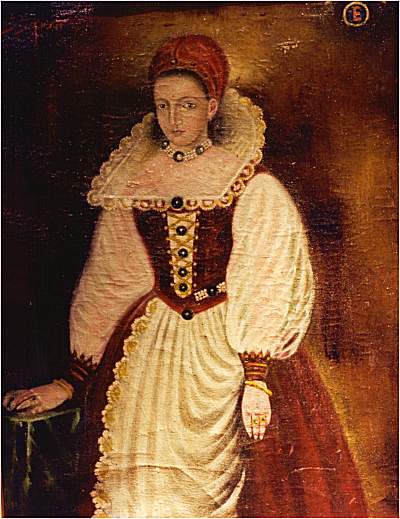
All too well the Slovaks know the narrow road, which winds itself winding into the heights of the White Karpats, there, where Elizabeth Báthory in 16. Century her nuisance made: Her servants lured girls from the village in the castle; back nobody came. Once, it is said, rose the Báthory in the illusion of her rage "like a Bulldog over a girl and bit it in shoulder and chest". Naturally the inhabitants of Cachtice know these excessive stories many from them avoid the purged message still generations later. "you better visit the church and the museum", an old man with white hair recommended, "what do you want there above in the mysterious walls?"
One says that blue blood flowed by the veins of Elizabeth. And that the numerous incestuous marriages culminated in her family in mental degeneration such as phlegmatic or uncontrolled rage eruptions. Her brother for example was a Satanist, her aunt Klara had a notorious inclination to the lesbian procuration and her cousin Anna practised witchcraft and killed her own child. Elizabeth Báthory however was worse. The bitchy countess made her family and the small municipality Cachtice wellknown far beyond national borders: It regards a place in the Guinness book of Records as mass murderer, a woman committed to have killed 611 humans. Prince Vlad V. of Wallachia, but also the machinations of the Báthory did serve Bram Stoker as basis for his successful novel "Dracula".
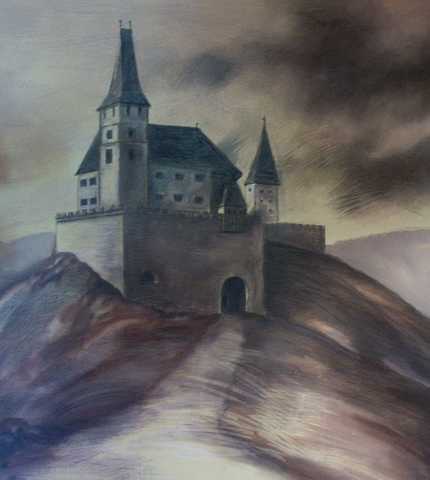 Like works of art meager pines rises up out of the soil. Deep furrows rinsed the rain into the loam ways underneath the castle ruin. From here it works like a demonic Disneyland, that was left by the ghosts. Early in the morning a wild composition from dogs barking and the organ tones of a neighbouring monastery are to be heard in the valley. In former times it have been cries of death of the village girls that made Cachtices inhabitant breathless. According to yellowed documents there was a trigger for the butchery: a "beast" combed Elizabeth's hair and pulled thereby somewhat too firmly. The Báthory turned out for trick in rises up, and scratched it, until the blood of the young servant ran over her hand. Her skin is to have wondrously tapered itself - Elizabeth was fascinated by the eternal youth.
Like works of art meager pines rises up out of the soil. Deep furrows rinsed the rain into the loam ways underneath the castle ruin. From here it works like a demonic Disneyland, that was left by the ghosts. Early in the morning a wild composition from dogs barking and the organ tones of a neighbouring monastery are to be heard in the valley. In former times it have been cries of death of the village girls that made Cachtices inhabitant breathless. According to yellowed documents there was a trigger for the butchery: a "beast" combed Elizabeth's hair and pulled thereby somewhat too firmly. The Báthory turned out for trick in rises up, and scratched it, until the blood of the young servant ran over her hand. Her skin is to have wondrously tapered itself - Elizabeth was fascinated by the eternal youth.
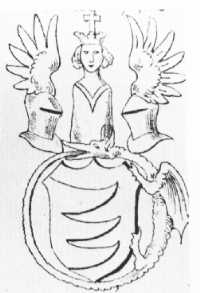 Elizabeth Báthory was born 1560. Her childhood she spent in the Hungarian Nagyesceed. There she learned Latin, German and Hungarian. Already at the tender age of twelve years she came as engaged to Frantisek Nadasdys on the Cachtice castle. Since the 18 year old count had nothing else in his mind as being a soldier against the Turks, Elizabeth drove herself out her boredom. For example with numerous love affairs. In particular, she strangled, poisoned and whipped young girls with the help of her servant
Elizabeth Báthory was born 1560. Her childhood she spent in the Hungarian Nagyesceed. There she learned Latin, German and Hungarian. Already at the tender age of twelve years she came as engaged to Frantisek Nadasdys on the Cachtice castle. Since the 18 year old count had nothing else in his mind as being a soldier against the Turks, Elizabeth drove herself out her boredom. For example with numerous love affairs. In particular, she strangled, poisoned and whipped young girls with the help of her servant
Truth or fiction? Also a mystic reaction of the farmers, who did not want to admit the truth: The countess was a kind of a Cannibal. Witnesses from the area confirmed that. Also appropriate recordings contain Elizabeth's diaries. For example it characterises the victims as "weakly and almost disappointing". Accordingly they had to pay for. Among the torture instruments a "iron virgin" ranked, from its chest a knife shot came and killed the girls. Elizabeth bathed with large passion in blood.
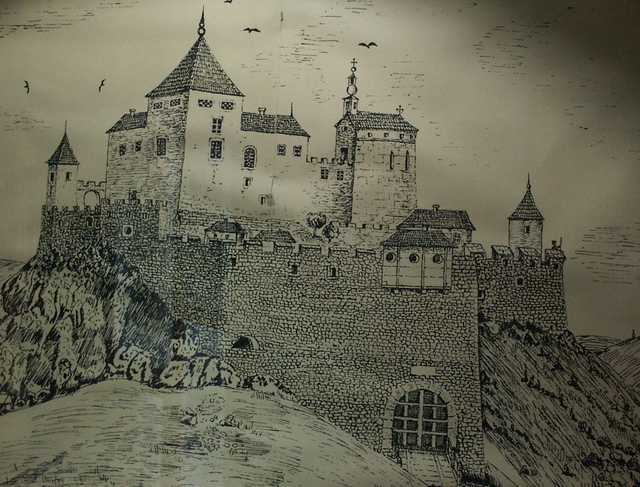 "It was a creep aristocracy, the resided" here above, says Petr Lajtha, "humans had to work hard for the Báthory and were punished in addition ". Petr Lajtha is a priest. With his long black coat and the out enormous earflaps on his cap he would be also as castle ghost a perfect one. Nearly each day the man of 84 runs up the mountain and reads in the inner court of the white limestone ruins the brevier. He knows the history of Cachtice like the Bible, reported of campaigns against Tartars and Turks, and about the faith. The faith, says Lajtha, retains humans of fate. Only against the Bathory nobody was protected.
"It was a creep aristocracy, the resided" here above, says Petr Lajtha, "humans had to work hard for the Báthory and were punished in addition ". Petr Lajtha is a priest. With his long black coat and the out enormous earflaps on his cap he would be also as castle ghost a perfect one. Nearly each day the man of 84 runs up the mountain and reads in the inner court of the white limestone ruins the brevier. He knows the history of Cachtice like the Bible, reported of campaigns against Tartars and Turks, and about the faith. The faith, says Lajtha, retains humans of fate. Only against the Bathory nobody was protected.
Each selected came very quick, where Lajtha straight lectures. In the inner court Elizabeth's minions tore the village's virgins in snow and ice the things from the body, pulled them furiously on the hair, flogged them to soil. Others poured them cold water over the head, while Elizabeth in the armchair throning and pursuing the happening. Furs protected her against the cold weather. And if the naked daughters from the village in panic fear of her squatting together, she began to laugh. Of the Satan the possessing killed in series. Nobody dared to ask the countess to the whereabouts of the young women. First the incidents relied on bare accusations of the "common" land people. " the countess was noble and Protestant", tells Lajtha, "thereby was she simultaneous outside of the jurisdiction of the civilian authority and the dominant catholic church". Also the monks, who lived beside the brief Viennese residence of the Báthory, did not do anything. That is, not much. If the cries of the girls resounded at night by the cellar, the merciful brothers threw flowerpots against the windows of the Báthory.
The fact that the inhabitants in Cachtice react today somewhat sensitively, if one inquires about the Báthory, has a simple reason. Some years ago, Lajtha says, two alleged film producers from Bratislava arrived. They had organised a large fake, wanted to make an authentic work about the Báthory with the domestic population. The girls from Cachtice dreamed already about Hollywood, about a large career as a film star, were however bitterly disappointed. " the rogues landed before court", Lajtha says somewhat cynically and means with it the naiveness of the village youth.
At the latest for this time the mayor of Cachtice treats the oil painting of the Báthory like his personal treasure: It does not hang anymore in the museum, but is located constricted in the office for village. For visitors he unpacks it however gladly, and he can be photographed with the Báthory together gladly. She looks strict, also to the high-put hair and biting view.
After the death of her man in the year 1604 the machinations of the Báthory reached her highest point, the countess looked now for herself only for young ladies of aristocratic origin - and could not longer reject the numerous inquiries of the families. Juraj Thurzo and members of the own family terminated the disaster, arrested Elizabeth. In order to save the reputation of the family, they directed the suspicion on the four servants.
The court in Gytca judges immediately. An executioner tore them with pliers the fingers off and threw the still living bodies into a fire. " the process", says Lajtha, "according to recordings was later again opened". King Matus II. distrusted the fast judgement. When in the new procedure 224 persons from the proximity were cross-examined, an avalanche came into rolling. Numerous persons had produced the atrocities: A woman for example was responsible only for mixing the poison Cocktails.
Elizabeth Báthory remained interned up to her death in August 1614 on the castle. Her last happening had been terminated in cold, snow-rich December eight of the yearly 1610. Juraj Thurzo stormed with a troop soldier the Cachtice castle. They surprised the Báthory in a dark vault, blood-flooded. In the dimmy lit up inner court a cluster of young girls was located - to ice sculptures frozen.
Based on an article of Thomas Niederberghaus in "Der Tagesspiegel" from 7thof August 1999
Who wants to know more about her, this Link leads you to the story of her, collected by myself.
The first two pictures are taken on our first attempt to visit Cachtice. The snow did not give us any chance (despite winter tires). After we were there now in the summer, we had to state that it would have been also much too dangerous in the wintertime to climb in the ruin.
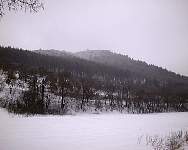
Cachtice im Winter
|
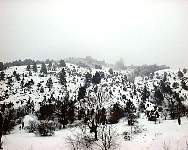
Cachtice im Winter
|
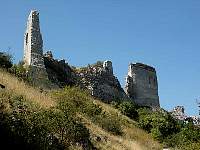
Die Ruine
|
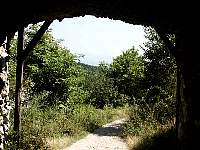
Der Eingang
|
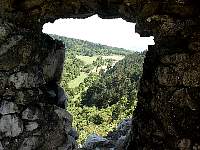
Blick ins Tal
|
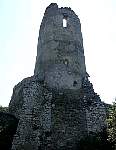
Der Todesturm
|
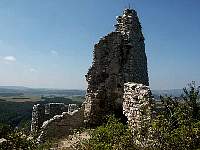
Die Ruine
|
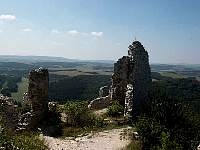
Die Ruine
|
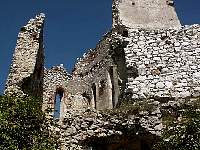
Die Ruine
|
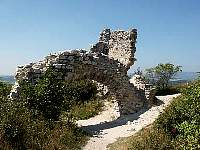
Die Ruine
|
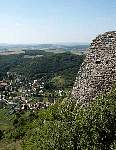
Blick ins Tal
|
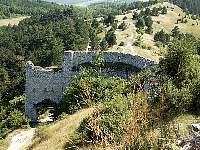
Die Ruine
|
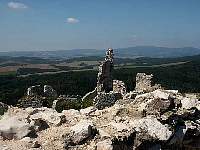
Die Ruine
|
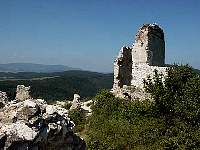
Die Ruine
|
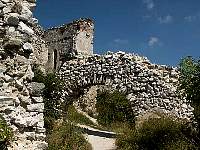
Die Ruine
|
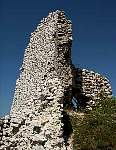
Die Ruine
|
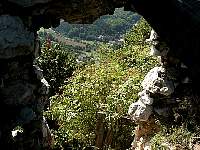
Blick ins Tal
|
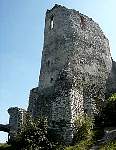
Der Todesturm
|
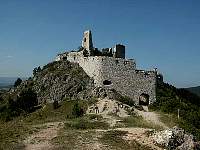
Die Ruine
|
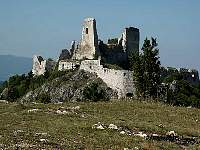
Die Ruine
|
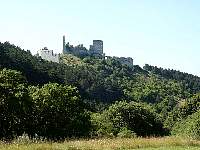
Die Ruine
|

© Ulrich Hoffmann 2002 - 2003